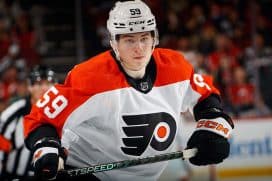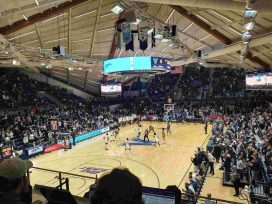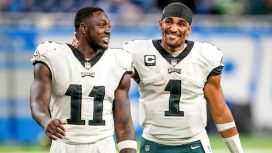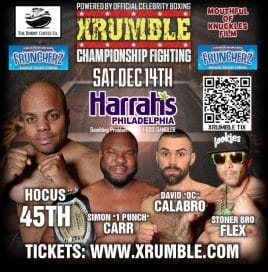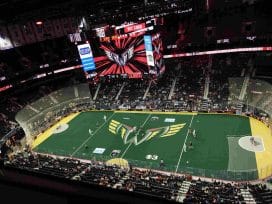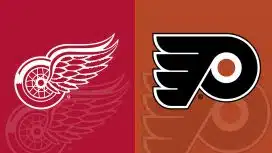Phillies
Top 25 Phillies of All-Time: 10 players who just missed
By: Matt Alberston, Historical Columnist
Over the past several weeks, we at Sports Talk Philly have assessed who we believe are the top 25 Philadelphia Phillies of all-time. We digested the statistics and debated the results. Who made the top 25 and why? Did the points system provide an accurate rankings portrayal? We took a few liberties with the rankings but by and large, we stuck with the rankings because they were based on traditional and advanced statistics.
However, the fun of lists like these is the discussion they generate and the arguments that ensue. How can you rank this player over that one? And, possibly more interesting, why wasn't so and so included in the top 25? Before unveiling the top Philadelphia Phillie of all-time, we felt it necessary to explain why a few players fell short of the top 25. Below is a list of ten players who were close, but ultimately didn't crack our top 25 based on points or inability to meet our five year minimum with the Phillies.
The 1980 Stars
The most obvious exclusion from our list is Pete Rose, arguably one of the top five players in major league history. When the Phillies signed Rose as a free agent after the 1978 season, the organization felt it had the last piece of the puzzle needed to push the club over the top and into the World Series. After injuries plagued the 1979 team, the Phillies had high hopes for the 1980 season. The team was composed of veterans and players in their prime. Many of the players who were raised in the Phillies farm system and those who were brought in via trade or free agency had significant postseason experience. Rose was one of the latter; a veteran with significant postseason experience with the Cincinnati Reds. He brought an intensity and professionalism to the club that significantly improved the Phillies' chances of winning their first World Series.
Rose was integral in bringing the Phillies a World Series title in 1980 and a National League pennant in 1983. He met the five year in Philadelphia requirement but his statistical record in Philadelphia was poor. Per our ranking system, Rose totaled a measly four points, compiling a 1.1 total WAR in five seasons in Philadelphia. Additionally, because of his limited time in Philadelphia, he wasn't able to crack the top 25 organizational rankings in either the traditional or the advanced measurements we utilized in our ranking system. It's possible that the Phillies win in 1980 without Rose, but it's obvious his experience and professionalism helped to push the club over the top to a World Series title in 1980, ending a 97-year (77-year modern era) championship drought.
Rose's fellow 1980 teammates Greg "The Bull" Luzinski and Larry Bowa also nearly missed entering the top 25 list. Garry Maddox opened the top 25 with 21 total points. The Bull compiled 20 points and Bowa 18. Luzinski compiled a 19.1 WAR in his 11 years in Philadelphia and even ranks in the organizational top 25 in OPS, hits, doubles, home runs and RBI. However, Luzinski wasn't known for his fielding. The best example is easily his trapped ball play in the 1977 NLCS against the Dodgers. If Luzinski catches the ball cleanly, it's likely that the Phillies punch their ticket to their first World Series since 1950 and a rematch against the upstart New York Yankees. Luzinski posted a pitiful -15.7 defensive WAR while in Philadelphia. In order to make the top 25, a player must be well rounded and able to play both offense and defense. Luzinski wasn't a good enough fielder to earn a bump into the top 25.
Larry Bowa posted a 21.4 WAR during his 12-year Phillies career. However, he only ranks in the the organizational top 25 in hits and triples and only once posted a 5+ WAR season. He had no 8+ WAR seasons. He was an adequate offensive player and his defense was good (16.4 dWAR), but not enough for him to crack the list.
The Two Aces
A more modern example of someone who just missed the list is Cliff Lee. Lee spent five total years in Philadelphia. Lee was the player to get at the trade deadline in 2009 and the Phillies landed him. It seemed inevitable that the Phillies would again be able to make a deep run in the playoffs. Lee was a bulldog and fans fell in love with his ability to work effectively and quickly on the mound. Arguably the most indelible image of the 2009 World Series was Lee's nonchalant pop up catch on the mound during Game 1. Like Grover Cleveland Alexander 94 years earlier, Lee dominated an American League lineup as the Phillies won Game 1 and gave Philadelphia fans hope of a world title.
The Phillies fell just short of back-to-back World Series titles that year and similarly, Lee fell short of the top 25 list primarily because of his short time in Philadelphia. He compiled a 22.3 WAR , including three seasons at 2+ WAR, two seasons at 5+ WAR, and one season at 8+ WAR. He ranks in the Phillies top 25 rankings in ERA and WPA.
Lee was a member of what became known as "The Four Aces," which included Lee, Cole Hamels, Roy Oswalt and Roy Halladay.
Halladay was the most dominant pitcher of the era. Unfortunately, Halladay was automatically disqualified from our list because he was only with the club for four years. During that span, Halladay was 55-29 and posted a 3.25 ERA. For some fans, it seemed like the days of Steve Carlton had returned. When Halladay took the hill, it felt like the Phillies were guaranteed a win. His 2010 season was his best in Philadelphia as he went 21-10 in 250.2 innings of work. He also threw a perfect game and a postseason no-hitter in the same year (2010).
The Bat
Pat Burrell also missed our list as he compiled 14 total points per our system. He spent nine years in Philadelphia but only posted three seasons as a 2+ WAR player and none as a 5+ or 8+ WAR player. He ranks among the organization's top 25 in OPS, doubles, home runs, and RBI. But similar to Luzinski, Burrell was a poor fielder, posting a -9.6 dWAR over nine seasons in Philly, significantly devaluing his offensive numbers.
The Field
Other players close to the top 25 but did not warrant inclusion were Lenny Dykstra (17 points), Von Hayes (17 points), Scott Rolen (17 points), Fred Luderus (16 points), and Napoleon Lajoie (15 points). Lajoie, a Hall of Famer absent from the Phillies Wall of Fame, spent five years in Philadelphia at the turn of the 20th century before jumping to the upstart American League and to the Cleveland Indians where he became one of the greatest players of the Dead Ball Era. Dykstra embodied the club affectionately known as the "Macho Row Mullets" – a tough, blue collar team that made it to the 1993 World Series and forever captured the hearts of Phillies fans everywhere. Dykstra had six seasons at 2+ WAR, two seasons at 5+ WAR, and one season at 8+ WAR. His numbers are devalued by the fact that he doesn't rank in the top 25 in any considered offensive category.
Both Hayes and Rolen had high expectations once they donned their Phillies uniforms. Hayes was the major piece in an infamous "5-for-1" trade in 1983 when he was traded to the Phillies for Julio Franco, Jay Baller, Manny Trillio, George Vukovich and Jerry Willard. Hayes joined a mature squad that reached the World Series. He was an adequate player but fans have a hard time truly evaluating Hayes' talent because of the "5-for-1" sticker. In Hayes' nine years in Philadelphia, he compiled a 27 total WAR and played at a 2+ WAR level in three seasons, at a 5+ WAR level in seven seasons, and an 8+ WAR level in one season. But, like Dykstra, he doesn't rank in the top 25 in any considered offensive category.
Scott Rolen was a 1993 second round draft pick with incredibly high potential and was clearly the club's best player during his seven years with the Phillies. He compiled 29.2 WAR over seven seasons and played at a 2+ WAR level in six seasons and at a 5+ WAR level in two seasons. He cracked the top 25 in OPS and home runs, but his relatively short stay in Philadelphia detracted from his score.
Last, but not least, Fred Luderus also missed the top 25 list but warranted consideration. Luderus was the captain of the 1915 NL Champion Phillies and was a rock at first base. He compiled 19.8 WAR over 11 years in Philadelphia, with four seasons at 2+ WAR and one at 5+ WAR. Despite the fact that Luderus' playing career ended in Philadelphia in 1920 – 96 years ago – he still ranks in the top 25 in hits, doubles, triples, and RBI. Luderus held the Phillies record for most games played at first base until Ryan Howard passed him on May 1, 2015.
Who's No. 1?
Wednesday, Sports Talk Philly will unveil No. 1 on our countdown of the top 25 Phillies of all-time. Below is a linked list of the previous 24 entries.
- No. 25, Garry Maddox
- No. 24, Roy Thomas
- No. 23, Gavvy Cravath
- No. 22, Chris Short
- No. 21, Cy Williams
- No. 20, Curt Schilling
- N0. 19, Cole Hamels
- No. 18, Ryan Howard
- No. 17, Sam Thompson
- No. 16, Del Ennis
- No. 15, Johnny Callison
- No. 14, Jim Bunning
- No. 13, Dick Allen
- No. 12, Billy Hamilton
- No. 11, Sherry Magee
- No. 10, Bobby Abreu
- No. 9, Chuck Klein
- No. 8, Richie Ashburn
- No. 7, Jimmy Rollins
- No. 6, Chase Utley
- No. 5, Robin Roberts
- No. 4, Steve Carlton
- No. 3, Ed Delahanty
- No. 2, Grover Cleveland Alexander
